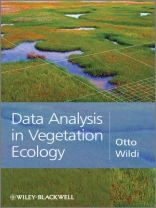Evolving from years of teaching experience by one of the top
experts in vegetation ecology, Data Analysis in Vegetation
Ecology aims to explain the background and basics of
mathematical (mainly multivariate) analysis of vegetation data.
The book lays out the basic operations involved in the analysis,
the underlying hypotheses, aims and points of views. It conveys the
message that each step in the calculations has a specific,
straightforward meaning and that patterns and processes known by
ecologists often find their counterpart in mathematical operations
and functions. The first chapters introduce the elementary concepts
and operations and relate them to real-world phenomena and
problems. Later chapters concentrate on combinations of methods to
reveal surprising features in data sets. Showing how to find
patterns in time series, how to generate simple dynamic models, how
to reveal spatial patterns and related occurrence probability
maps.
Tabella dei contenuti
Preface.
List of Figures.
List of Tables.
1 Introduction.
2 Patterns in Vegetation Ecology.
2.1 Pattern recognition.
2.2 Interpretation of patterns.
2.3 Sampling for pattern recognition.
3 Transformation.
3.1 Data types.
3.2 Scalar transformation and the species enigma.
3.3 Vector transformation.
3.4 Example: Transformation of plant cover data.
4 Multivariate Comparison.
4.1 Resemblance in multivariate space.
4.2 Geometric approach.
4.3 Contingency testing.
4.4 Product moments.
4.5 The resemblance matrix.
4.6 Assessing the quality of classifications.
5 Ordination.
5.1 Why ordination?
5.2 Principal component analysis (PCA).
5.3 Principal coordinates analysis (PCOA).
5.4 Correspondence analysis (CA).
5.5 The horseshoe or arch effect.
5.6 Ranking by orthogonal components.
6 Classification.
6.1 Group structures.
6.2 Linkage clustering.
6.3 Minimum-variance clustering.
6.4 Average-linkage clustering: UPGMA, WPGMA, UPGMC and
WPGMC.
6.5 Forming groups.
6.6 Structured synoptic tables.
7 Joining Ecological Patterns.
7.1 Pattern and ecological response.
7.2 Analysis of variance.
7.3 Correlating resemblance matrices.
7.4 Contingency tables.
7.5 Constrained ordination.
8 Static Explanatory Modelling.
8.1 Predictive or explanatory?
8.2 The Bayes probability model.
8.3 Predicting wetland vegetation (example).
9 Assessing Vegetation Change in Time.
9.1 Coping with time.
9.2 Rate of change and trend.
9.3 Markov models.
9.4 Space-for-time substitution.
9.5 Dynamics in pollen diagrams (example).
10 Dynamic Modelling.
10.1 Simulating time processes.
10.2 Including space processes.
10.3 Processes in the Swiss National Park (SNP).
11 Large Data Sets: Wetland Patterns.
11.1 Large data sets differ.
11.2 Phytosociology revisited.
11.3 Suppressing outliers.
11.4 Replacing species with new attributes.
11.5 Large synoptic tables?
12 Swiss Forests: A Case Study.
12.1 Aim of the study.
12.2 Structure of the data set.
12.3 Methods.
12.4 Selected questions.
12.5 Conclusions.
Appendix A On using software.
A.1 Spreadsheets.
A.2 Databases.
A.3 Software for multivariate analysis.
Appendix B Data Sets Used.
References.
Index.
Circa l’autore
Dr Otto Wildi, Head of Research Unit Community Ecology, Switzerland.












